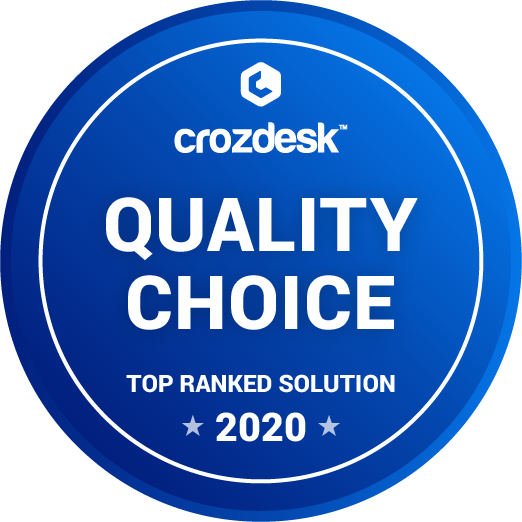
From tracking competitor marketing strategies to collecting real-time stock prices, web scraping is now synonymous with data-driven decision-making. However, challenges like scraping ethically, avoiding rate limiting, and handling large data volumes impede the potential of several web scraping approaches.
So, what approach should you rely on?
Have you tried to scrape data using Python? If not, note that several challenges other than the ones mentioned rarely cap Python’s scraping capabilities.
With a rich set of frameworks, libraries, and strong community support, Python web scraping is the go-to scraping approach. So, here is how you can take advantage of this versatile language to scrape websites effectively.
Before you can start scraping websites using Python, you must learn the ins and outs of Python.
Python’s syntax is clear and concise, improving code readability and debugging. It is cross-platform and includes data analysis, machine learning, and automation tools within its ecosystem, making it easy for many to learn and use Python’s capabilities.
Other than Python concepts, you must familiarize yourself with HTML and CSS. Explore HTML tags, attributes, and structures. Look into how CSS selectors identify elements on a webpage and how to use browser developer tools to examine a web page’s code.
You should also be comfortable with HTTP methods, including GET and POST. Dig deep into web servers’ functionality and how they handle requests. Remember that you should also be able to debug various Python and server errors.
2. Setting Up a Python Environment
Ensure Python is appropriately installed on your computer. If it is not installed, source it from the official website. There are Python copies for the Windows, Mac, and Linux platforms. Follow the instructions provided on the website to successfully install Python on your computer.
To confirm Python’s installation, type the following command into the prompt or terminal window and press enter:
Command: python3 – – version
If Python is installed correctly, the Python version number gets printed on the console.
If there is an error message like “python3: command not found” or “python not recognized,” then Python is poorly configured. Read through Python’s documentation to solve the issue.
Once your system has a stable version of Python properly installed, select a suitable IDE (Integration Development Environment).
Compared to simple text editors like Notepad, an IDE offers features like code completion, debugging capabilities, and more.
3. Using various Python scraping libraries
To learn scraping with Python efficiently, you must get accustomed to Python’s scraping libraries. Some popular scraping libraries include:
- Requests: Simplifies the process of fetching HTML pages for data scraping. With Requests, you can quickly initiate an HTTP request to a target website server, and the library will help retrieve the content of a specific URL.
- Beautiful Soup: A library suited for scraping content from static websites. It converts the raw HTML content retrieved with the help of Requests into a structure you can navigate through and extract particular elements like text content and various attributes.
- Scrapy: For large-scale web scraping projects. It is a robust Python framework that helps you navigate complex website structures and extract data across multiple pages simultaneously. You can also use Scrapy to automate data extraction and collection.
- Selenium: Compared to a scraping library like Beautiful Soup, which is limited to parsing HTML/XML content, Selenium steps in whenever you work with a Javascript-heavy website. Just like you manually interact with a dynamic website, so can Selenium. It can mimic a real user, execute Javascript, and render dynamic content, making it a powerful tool for extracting content from websites that frequently change structure.
Because of these web scraping libraries and other tools, Python can overcome several scraping challenges.
Starting with handling large volumes of data, Scrapy supports asynchronous data scraping and can efficiently manage multiple requests.
BeautifulSoup, on the other hand, allows you to navigate sites with complex HTML structures, including those with inconsistent structures. And you don’t have to be that techy to do this.
BeautifulSoup provides a simple and intuitive interface for navigation and searching through HTML content.
Python also focuses on ethical and legal web scraping. There are tools and libraries for checking and respecting the robots.txt file. This file defines what you can and cannot scrape from a website. Consider the following to ensure you are scraping ethically with Python:
- Respect robots.txt: As stated, this file should inform you what’s out of limit. So, review this file to ensure your scraping scripts comply with the outlined directives.
- Go through the website’s terms of service (ToS): Reading through the website’s terms of service should inform you whether a website is open to bots or crawlers. The legal consequences of scraping a website that explicitly forbids scraping can be dire.
- Minimize server load: Implement delays between requests to avoid overwhelming web servers, reducing the likelihood of causing denial of service or IP blocks. Use Scrapy to minimize server load, as it allows you to configure concurrency settings to limit the number of requests you make.
- Respect data privacy: You must gain explicit permission before scraping private data, such as paywalled digital products or information. If you are given access to private data, ensure it is anonymized and protected.
4. Using Data Responsibly
After scraping data and storing it for processing, heed the need to use data responsibly. Use the data in a way that won’t harm the website owner’s reputation or the site’s credibility.
Be wary of activities that may lead to data breaches, misuse of sensitive information, and unauthorized data exploitation.
If you intend to distribute or share the data, ensure you are not violating the website’s terms of service from which you got the data. When necessary, credit or acknowledge the original creators to sustain respect for intellectual property.
5. Keep Exploring Python’s Web Scraping Capabilities
Python’s scraping capabilities span beyond the use of built-in libraries and frameworks. You can integrate Python’s tools with proxies to bypass most anti-scraping systems. Proxies allow for IP management and rotation, decreasing the possibility of IP blocks.
Besides merging Python’s capabilities with third-party tools, Python natively supports asynchronous scraping and task distribution across multiple machines. This significantly increases the efficiency and speed of your scraping process.
Closing words
Scraping data using Python is easy to learn and super efficient. From the syntax to the suite of libraries, frameworks, and tools, Python is your one-stop approach to scraping data from static and dynamic websites. Take a read to discover one of the most established web scraping approaches.
Raghav is a talented content writer with a passion to create informative and interesting articles. With a degree in English Literature, Raghav possesses an inquisitive mind and a thirst for learning. Raghav is a fact enthusiast who loves to unearth fascinating facts from a wide range of subjects. He firmly believes that learning is a lifelong journey and he is constantly seeking opportunities to increase his knowledge and discover new facts. So make sure to check out Raghav’s work for a wonderful reading.




